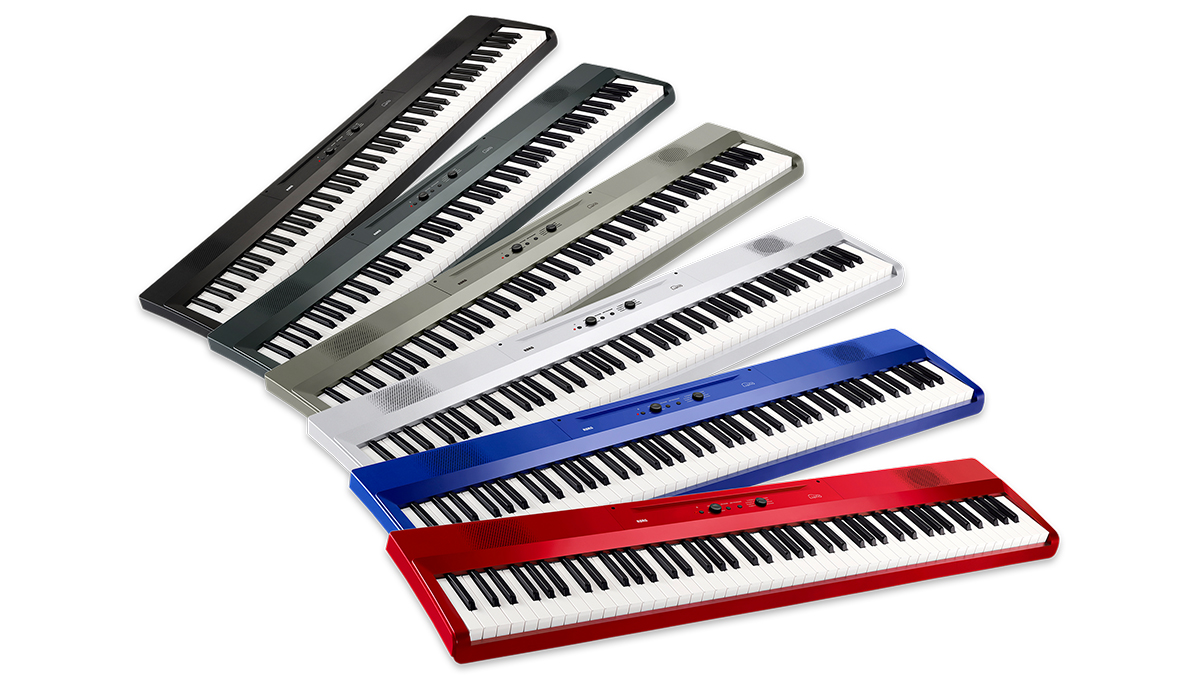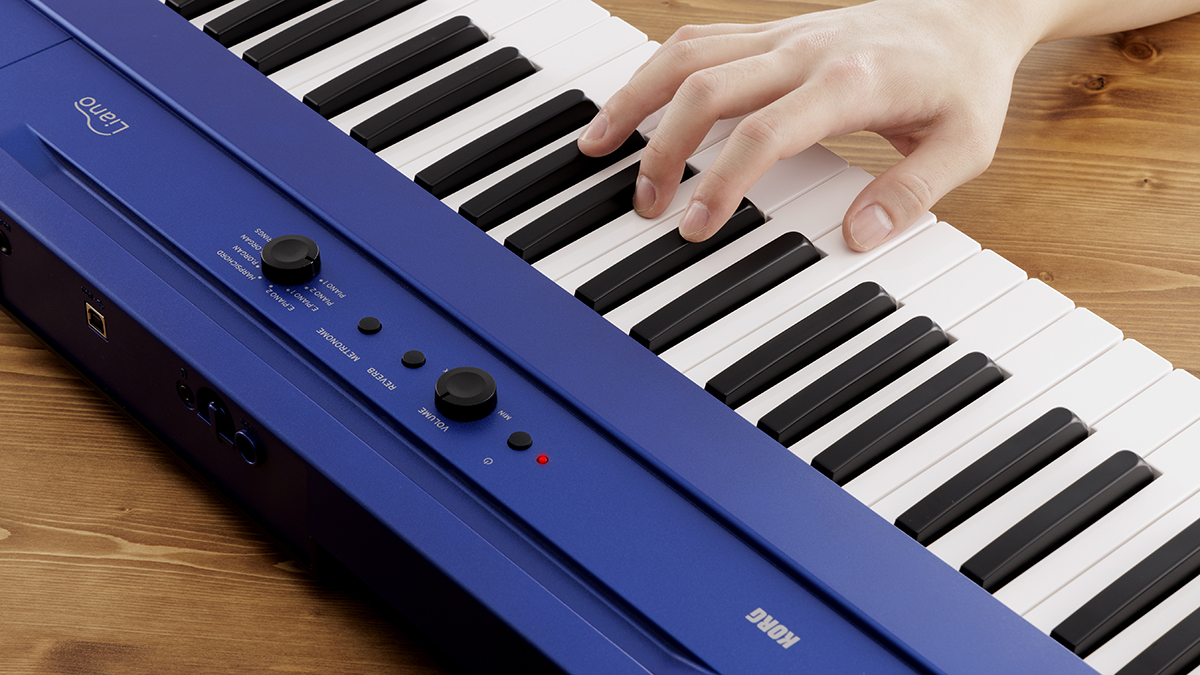Korg’s Liano is now available in 6 different colours, so which one looks the best?
Black, white, grey, silver, blue or red?
Launched last year, Korg’s Liano is the slimline 88-note beginner digital piano with a soft-touch key action. It’s also portable: you can power it from batteries and it has a pair of built-in bass reflex speakers.
Why are we telling you this again? Because Liano is now available in six colour options. In addition to the original black, you now have pearl white and metallic grey, silver, blue or red options to choose from.
So, which one should you go for? If you want to play it totally safe, black is the obvious choice (no one’s going to be scared by that if you decide to sell at a later date) and the grey and silver options look pretty conservative, too. The white Liano is a little bolder, but we’d be worried about marking its pristine finish.
Which leaves metallic blue and red. There are quite a few red keyboards on the market already - we’re looking at you, Nord - but the blue option is genuinely distinctive. As such, this would be our choice, but feel free to disagree.


In performance terms, of course, it doesn’t really matter. The beating heart of all the Lianos is an Italian grand piano, and there are seven further sounds to play with, too. The Liano is a mere 7cm tall, weighs 6.2kg and offers USB MIDI and audio.
As you can see, the control set has been kept simple. There’s no screen, so sounds are selected via a labelled dial. There are reverb and chorus effects, too.
Liano costs £339, and the new colours will be available soon. Find out more on the Korg website.
Get the MusicRadar Newsletter
Want all the hottest music and gear news, reviews, deals, features and more, direct to your inbox? Sign up here.



I’m the Deputy Editor of MusicRadar, having worked on the site since its launch in 2007. I previously spent eight years working on our sister magazine, Computer Music. I’ve been playing the piano, gigging in bands and failing to finish tracks at home for more than 30 years, 24 of which I’ve also spent writing about music and the ever-changing technology used to make it.
"Yamaha has achieved an extraordinary level of immersiveness and realism, crafting an instrument that sounds closer to an acoustic piano and feels like one under your fingers": Yamaha Clavinova CLP-885 digital piano review
"Despite its size, it delivers impressive audio quality and premium functions as well as featuring a good selection of inspired sounds": Roland GO:Piano 88PX review









